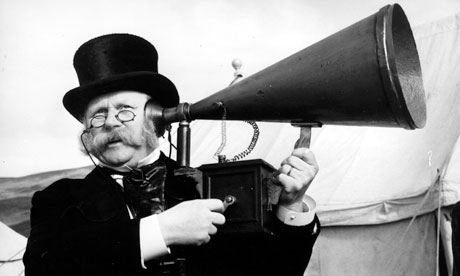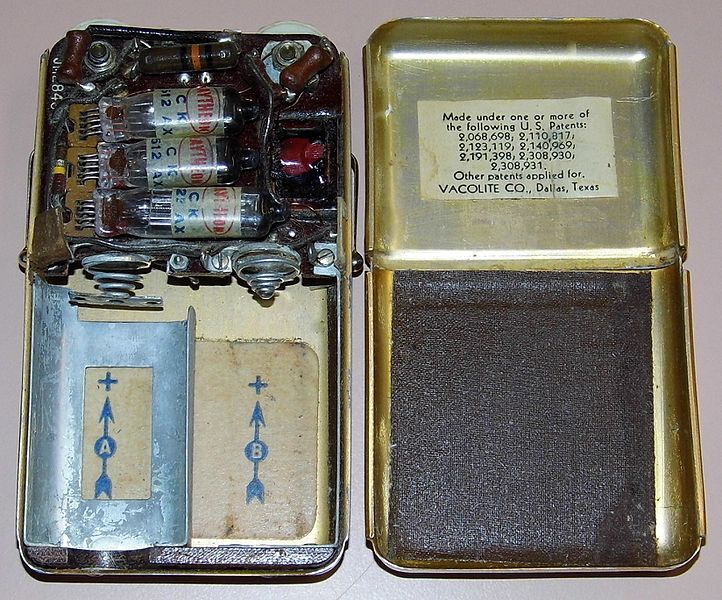Hearing aids have been around since the 17th century, yet, they differ greatly from the cutting-edge technology that we now have today.
In this blog, we would like to take you on a timeline through the history of hearing aids. From the very first hearing aids invented such as the ear trumpet, moving through to the first electrical advancements which helped mould hearing aids which are on offer now.
The ear trumpet
A simple way we are taught to increase our level of hearing is to cup our hands around our ears. This is because it is easier for our ears to catch sound waves using this funnel shape. Developing physics and science into a physical product,, the ear trumpet was then created.
The ear trumpet arrived in the 17th century and was the first hearing aid that we know of. It did look like a trumpet as it had a large funnel at the end which was connected to a slim tube to fit inside the user’s ear. This acted as a large instrument to catch more sound waves.
The user would hold the device to their ear and the speaker would directly talk into the funnel. Although this partially worked for some people it was still a heavy and large object to carry around. In addition to only be useful in small areas where not many people would be talking as the speaker would have to directly use the funnel.
As time went on more advanced versions of the ear trumpet were invented, including Auricles:

image source: https://fallsofsound.com.au/cow-horns-high-tech-history-hearing-aid-technology/
Auricles
Auricles were invented based on the concept of an ear trumpet, just designed to be smaller and more portable. Instead of the user having one large ear trumpet to use, they had two smaller ear trumpets which would be placed over both ears.
Auricles are much like earlier versions of BTE (behind the ear) hearing aids which we now have today.
Due to their small size and portability, these hearing aids were still worn well into the 20th century. Yet there was still only a small increase in hearing capability and therefore, people suffering from more severe hearing loss would not gain many benefits. We would need to move much further along the history of hearings aids timeline until severe hearing loss could be remedied.

image source: https://collection.sciencemuseumgroup.org.uk/objects/co78054/acoustic-headband-with-ear-trumpets-aural-aid
Audiphones
Although many hearing aids were invented with the intention of being used directly on the ear, in 1879 an inventor discovered that we can also hear sounds through our teeth.
Richard Rhodes suffered from hearing loss, however, he found that the ear trumpet did not help him. One day he placed the ear trumpet in his mouth and found that he could hear the ticking of his watch on his wrist. This led him to create the Audiphone.
This worked because we have small bones in our ears which vibrate when sounds are made, these vibrations can be translated into the sounds we hear around us. Therefore, the audiphone was built by using a large plastic sheet which would be placed against the user’s top set of teeth. Which was then connected to another plastic sheet which would be placed against a speaker’s chin. When the speaker directly spoke onto the plastic, the vibrations would travel into the user’s teeth and skull allowing them to hear.
This helped those who did not find the ear trumpet to be effective and could increase a user’s hearing by 30dB. Yet, it was even larger and possibly less portable than the ear trumpet.

image source: https://www.eartrumpets.co.uk/catdetail.php?field=makers&fieldno=1&test=5&sort=&picno=maw1903_179
Vacuum hearing aids
Carbon hearing aids were invented in the 20th century and were the first electrical hearing aids to be made. However, as technology progressed an inventor by the name of Earl. C Hansan realised that you can amplify the sound from a carbon hearing aid to make it easier for those hard of hearing.
What are vacuum hearing aids?
Hanson invented the Vactuphone in 1923 and was able to make his vacuum tubes small enough to be carried around on a person. Unfortunately due to the power requirements necessary to power his vacuum tubes, a fairly large battery would need to be connected. This made them a little harder to transport around, however, they still worked very well.
The vacuum tubes would be worn externally to the hearing aid, which is why the term ‘two-piece hearing aid’ was created. Two-piece hearing aids worked very well and continued being used until ‘one-piece’ hearing aids were created in 1945.
As technology was developing at fast rates, other devices and electrical components were being miniaturised to suit the needs of people who needed easy portable items. Batteries were a part of this and therefore, allowed hearing aids to be made with batteries built internally. Hence why they became ‘one-piece’ hearing aids.
These technological advancements were how our hearing aids have been shaped into what they are today, as many key features still remain.

image source: https://www.flickr.com/photos/51764518@N02/14245623336/
21st Century hearing aids
We are now in the 21st century and technology is progressing and a faster rate than ever before. We have been introduced to hearing aids which offer wireless connections which can help those even with severe hearing loss.
Modern hearing aids are often inside or behind the user’s ear as sounds are transmitted through a small microphone and then electric signals within the hearing aid can amplify these sound waves so the user can hear more easily.
Hearing aids have also dramatically been reduced in size compared to how large and bulky they once were. They are now much more portable for everyday life and can be easily adjusted depending on whether the user is in a quiet area or in a more crowded area.

RS Luxor.LiNX Quattro.RIE 61.RE61
Signs of you may need hearing aids
As we grow older our hearing naturally deteriorates as we lose hair cells within our ears as we grow. Some people may experience hearing loss at a younger age if they have not been taking care of their hearing e.g. Turning up music too loud, not wearing headphones on construction sites or being often exposed to other loud noises. Symptoms of hearing loss can include:
- Consistently having to turn up the volume on the TV
- Often turning up the volume on devices; phones, tablets and other electronic devices.
- Asking others to repeat themselves in conversation
- Overall difficult to hear others in busy areas
If you have found any of these symptoms to be affecting you then we recommend you book a hearing test as soon as possible, therefore we could find the best solution for you. Click on the link to book an appointment with us.
